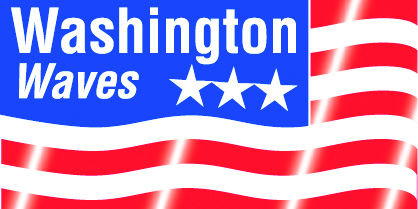After 43 days, the longest government shutdown in U.S. history came to an end with a stopgap measure that extends funding through January 30.
In addition, H.R. 5371 included three full-year appropriations bills covering the legislative branch, military construction and veterans affairs and agriculture, rural development and the Food and Drug Administration.
President Donald Trump signed the stopgap measure to reopen the government at 10:24 p.m. Wednesday in the Oval Office, surrounded by House Speaker Mike Johnson (R-La.) and members of his leadership team.
Just two hours earlier, the House gave final congressional approval to the package by a vote of 222 to 209.
Two days earlier, the Senate, where the bill had been stalled for weeks, passed the bill by a vote 60 to 40 after receiving votes from one Independent and seven Democrats who broke with their party to support the bill.
Trump used the bill-signing event to again call for an end to the Senate’s filibuster rule, which allowed Democrats to keep the bill from advancing to a final vote.
A number of federal agencies could face another impasse on January 30, when current funding expires.
Still, Republican leaders and others who have served in the minority in the past remain cool to the idea of killing the filibuster.
Furloughed federal workers are expected to receive full back pay. Layoffs announced during the shutdown by the administration are expected to be reversed. Language inserted in the bill before it passed the Senate reportedly provides a path for several Republican senators, whose phone records were subpoenaed during an investigation into the January 6 insurrection at the Capitol, to collect hundreds of thousands of dollars or more, which could disrupt the bipartisan work needed to complete the nine remaining spending bills.
Chinese Shipbuilding Fees
The American Association of Port Authorities (AAPA) expressed relief that fees and tariffs associated with a Section 301 investigation into China’s maritime and shipbuilding practices have been suspended for one year.
“This pause will allow the industry to continue delivering the cargo and passengers that power the American economy,” AAPA stated. “We urge the Trump administration to continue negotiations to ensure that these polices are not reimposed in one year.”
Responding to an announcement by the Office of the United States Trade Representative (USTR), AAPA also laid out alternative policies for domestic maritime revival without tax increases.
AAPA specifically asked the administration to release the U.S. Port Cargo Handling Equipment Demand Study currently under review at the Maritime Administration, to push for $10.9 billion over five years for the Port Infrastructure Development Program and to restructure tariffs to bypass allied countries like Japan, South Korea and the European Union, from which ports can acquire cargo-handling equipment (CHE).
The USTR had requested comments on its one-year suspension of fees and tariffs linked to the investigation into China’s targeting the maritime, logistics and shipbuilding sectors for dominance.
The tariff suspension, which began November 10, followed a White House announcement of a historic trade and economic deal reached by Trump and Chinese President Xi Jinping.
For additional information on the USTR announcement, contact Philip Butler, Thomas Au or David Salkeld at 202-395-5725.
Coast Guard Recruiting
The Coast Guard announced it exceeded its fiscal year 2025 (FY25) recruiting goals, achieving the highest accession numbers since 1991.
Adm. Kevin Lunday, acting commandant of the Coast Guard, said the numbers show that more Americans want to serve in the service than ever before.
“Thanks to our recruiters for their great success,” Lunday said. “We aren’t just growing. We are bringing in the best talent from across the United States and building the workforce of the future.”
According to the figures provided by the Coast Guard, the service accessed 5,204 active-duty enlisted service members in FY25, which was 121 percent of its FY25 target of 4,300. FY25 was the second year in a row the Coast Guard met its active-duty enlisted recruiting goals. The Coast Guard brought in 4,422 new service members last year.
The service also commissioned 371 new officers to achieve 101 percent of its overall goal, which the service said represents the largest officer target achieved in recorded history.
In the reserve component, the Coast Guard accessed 777 reservists, which was 104 percent of the official target of 750. The service said FY25 was the third year in a row that it met its recruiting goals for the Coast Guard Reserve.
UMSCA Meeting Rescheduled
A public hearing on the operation of the agreement between the United States of America, the United Mexican States and Canada (USMCA), which was scheduled previously for November 17, will now be held December 3–5 in Washington, D.C.
Set to begin at 9 a.m. each day, the hearing will be held in the main hearing room of the U.S. International Trade Commission, 500 E St., SW, Washington, DC 20436.
For additional information, contact Randall Oliver at 202-395-9449 or Randall.T.Oliver@ustr.eop.gov or Braeden Young at 202-395-9620 or Braeden.P.Young@ustr.eop.gov.
Labor Council Comments Solicited
Two U.S. agencies have invited questions and comments in advance of a virtual public session scheduled as part of the third meeting of the United States-Mexico-Canada (USMCA) Agreement Labor Council, scheduled December 9–10 in Ottawa, Canada.
Questions and comments should be submitted by 11:59 p.m. EST December 1 to MBX.USTR.USMCAhotline@ustr.eop.gov and ILAB-Outreach@ DOL.gov. All submissions must include the subject line USMCA Labor Council Meeting.
The virtual public session is scheduled to begin at 9 a.m. December 10. By November 25, details for registering to participate in the virtual public session will be posted to the U.S. Department of Labor and U.S. Trade Representative websites. For additional information, contact Brenna Dougan at 202-395-7391 or Samantha Tate at 202-693-4920.




